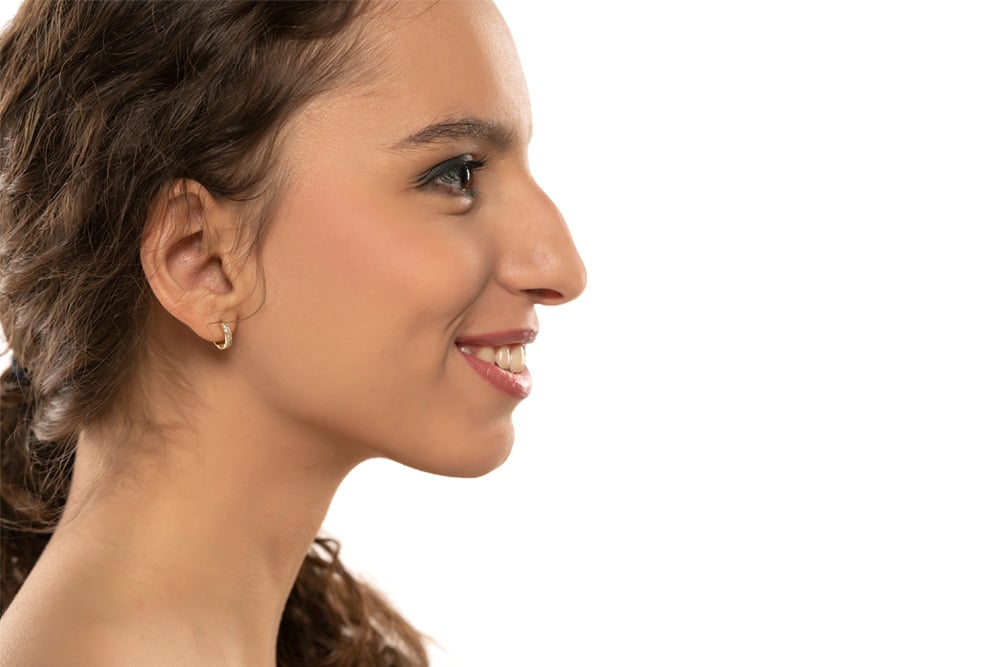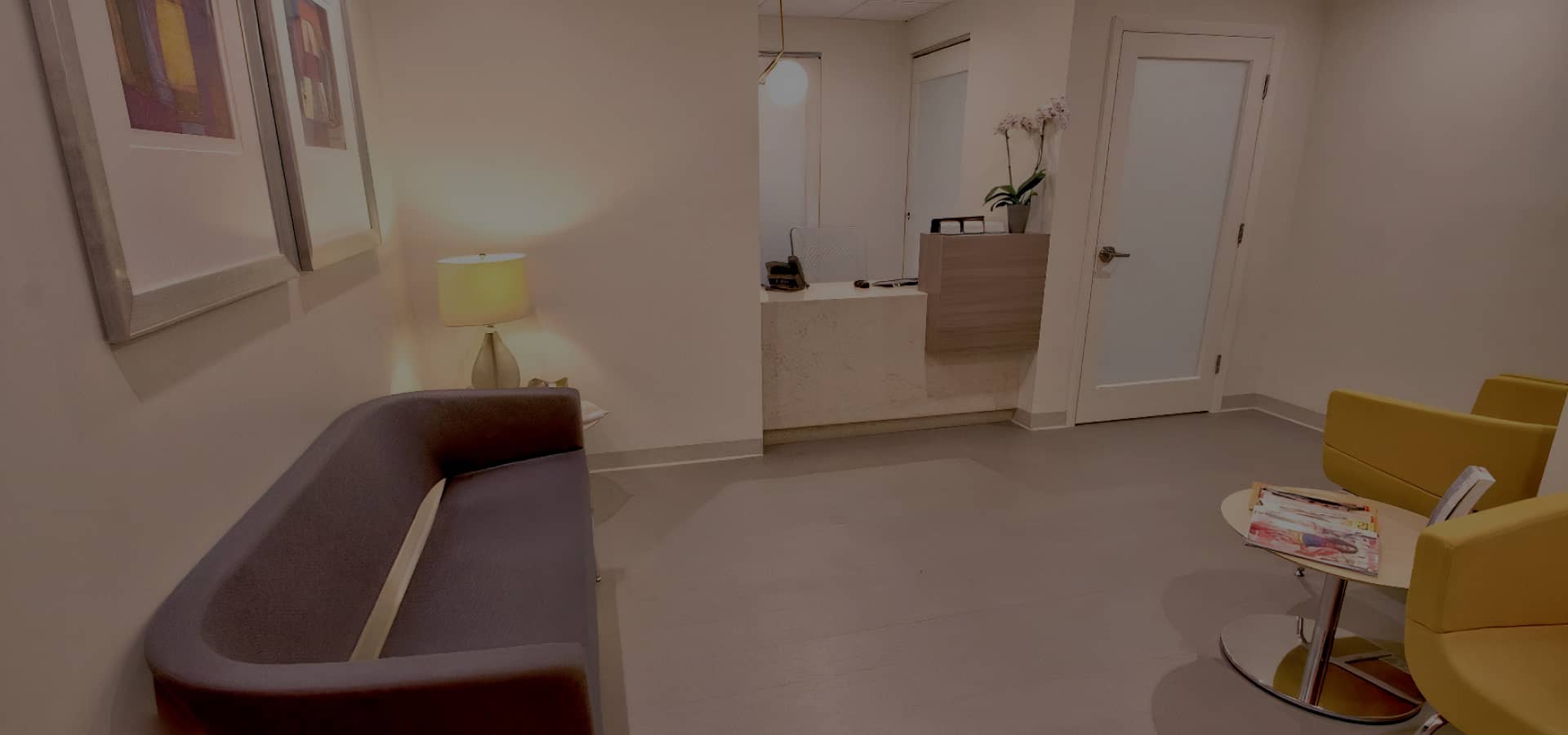Does your nose shape concern you? The impact a long nose has on one’s facial aesthetics is considerable, attracting immediate attention. If you identify as a female patient with a long nose and have considered reshaping options, this article offers a comprehensive guide to understanding rhinoplasty, the surgical procedure to modify the nose shape and profile. You will discover the challenges, techniques, and expectations associated with rhinoplasty surgery for long-nosed female patients.
Understanding the Anatomy of Long Noses
Rhinoplasty is a nose surgery used to modify the shape, size, and profile of the nose. For female patients with long noses, it involves altering the wide bridge and/or excessive cartilage in the tip, as well as reducing flared nostrils that make the nose appear wider and more dominant than other facial features. Ideal candidates for rhinoplasty are those who have a desire to reshape their entire nose for aesthetic purposes or to reduce a dorsal hump. To achieve desirable results, a plastic surgeon must first assess the patient’s type of nose to determine how much septal cartilage needs to be removed or augmented for an unbalanced appearance. Each treatment plan is tailored according to individual preferences and anatomy, so results can vary from person to person. Thus, it’s important to seek out a board-certified and experienced plastic surgeon who can develop a custom rhinoplasty plan for you.
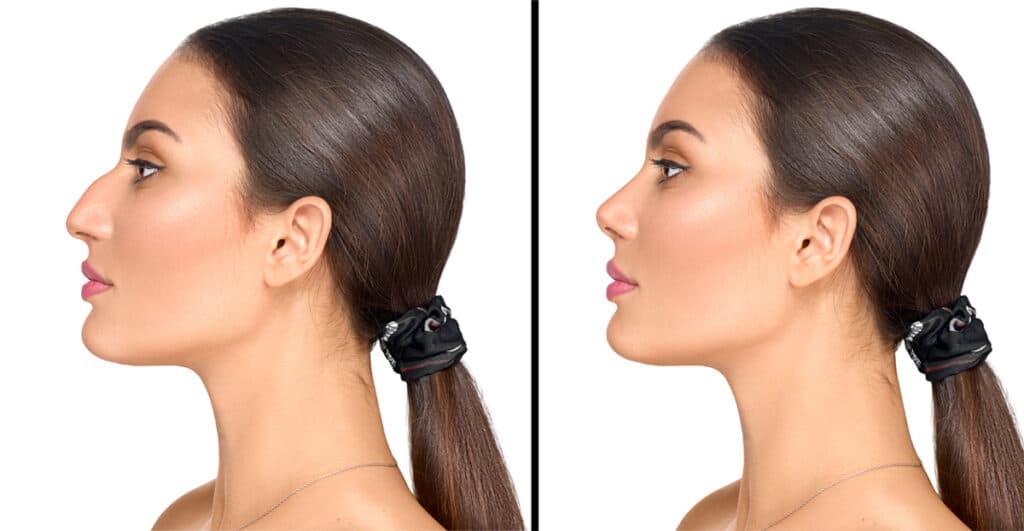
The Role of Plastic Surgeons in Long Noses
Plastic surgeons play an essential part in shaping long noses. They provide the structure and length that characterize longer nasal profiles. In rhinoplasty, understanding the nasal bones’ role is crucial to achieving a natural-looking, well-proportioned nose. Plastic surgeons also consider factors like the nasal bridge, nasal septum, and nasal dorsum when formulating a surgical plan.
Aesthetic and Functional Challenges of a Long Nose
A long nose is often accompanied by a wide bridge and excess cartilage, making it a dominant feature in someone’s facial structure. To increase facial balance and restore the natural proportions of the face, rhinoplasty can be used to reduce the size of the nose while reshaping it. Additionally, some patients with long noses also have problems with flared nostrils that make the nose appear wider than expected. Rhinoplasty is a facial surgery that can help address these issues and give a more aesthetically pleasing outcome by reducing excess cartilage and narrowing flared nostrils.
The Nasal Hump Phenomenon in Long Noses
True to its name, the nasal hump phenomenon is commonly seen in individuals with long noses. This anatomical characteristic, although not detrimental to health, can be a source of aesthetic concern. The nasal hump is a protrusion caused by an overgrowth of the nasal bone or cartilage, frequently associated with elongated nose structures. Deep understanding of this phenomenon is integral to effective rhinoplasty surgery, especially in resolving aesthetic challenges present in long noses.
A Deeper Look into Rhinoplasty Surgery for Long Noses

Rhinoplasty surgery for long noses often involves surgical modifications to the nasal structure providing both aesthetic and functional improvements. A rhinoplasty patient primarily focuses on refining the nasal proportions to complement the individual’s facial features. In the rhinoplasty technique used for long noses, the rhinoplasty surgeon typically reduces the nasal length while ensuring to maintain its breathing functionality. The success of the procedure heavily relies on the surgeon’s understanding of the subtle complexities of the nasal anatomy, and their experience with the rhinoplasty technique.
Surgeon’s Role in Successful Rhinoplasty Surgery
In the meticulous process of rhinoplasty surgery, a rhinoplasty surgeon’s experience becomes a beacon of success. It’s the rhinoplasty surgeon who decides the right incision style, balancing both aesthetics and functionality. The expertise of the rhinoplasty surgeon in making precise incisions impacts the outcome significantly. Therefore, choosing an experienced, tactful rhinoplasty surgeon is often the key to a successful rhinoplasty surgery result.
Different Types of Rhinoplasty Surgery Techniques
Various rhinoplasty surgery techniques address the concerns of long-nosed female patients. The Open Rhinoplasty Surgery technique provides the rhinoplasty surgeon with a direct visualization of the nasal structures. It’s appropriate for correcting major nasal deformities and reshaping the nasal tip projection. Closed Rhinoplasty Surgery, on the other hand, involves making incisions inside the nostrils, making it suitable for minor adjustments.
A third rhinoplasty surgery technique, known as Tip Rhinoplasty Surgery, specifically targets the nasal tip. It helps correct a bulbous nasal appearance, a common issue among long-nosed female patients. Effective utilization of these techniques can help achieve an aesthetically balanced facial appearance.
The Impact of Bulbous Nasal Tip on Rhinoplasty Surgery
A bulbous nasal tip can complicate the rhinoplasty surgery process, as it requires precise adaptations in surgical technique. This variation demands specific attention to preserve nasal function while achieving aesthetic improvement. Understanding and effectively addressing a bulbous nasal tip can significantly enhance postoperative results.
Preoperative Planning: Ensuring Nasal Proportion
Preoperative planning plays a pivotal role in preserving an optimal nasal proportion during rhinoplasty surgery. An in-depth prior assessment of the nasal profile becomes essential to gauge the suitable adjustive measures. We focus on each contour, from hump reduction to refining the tip, to provide a balanced and harmonious nose. This approach also aids in anticipating potential challenges and determining achievable outcomes for the Miami rhinoplasty patient, ultimately leading to a successful and satisfying result.
Importance of Ideal Nasal Tip Projection
The nasal tip region is one of the most important components of a rhinoplasty procedure, as it contributes to the overall cosmetic appearance of a person’s nose. Nose size and shape are two main characteristics that draw attention, making ideal nasal tip projection essential for achieving beautiful results from a rhinoplasty procedure. Common techniques used by surgeons during a rhinoplasty procedure include reducing the size of the nose, re-shaping or elevating the nasal tip region, and altering nostril size or shape. Utilizing these techniques can help achieve an ideal nose shape that is both aesthetically pleasing and in harmony with other facial features.
The Rhinoplasty Surgery for Women with Long Nose Procedure Itself
Rhinoplasty Miami for long-nosed women is a delicate and intricate procedure that requires both skill and precision. This form of cosmetic plastic surgery aims to reduce the length of the nose while maintaining its natural beauty, resulting in an aesthetically appealing appearance. During the rhinoplasty surgery, the nose will be shortened through careful incisions to reshape it and give it a more ideal appearance. The surgeon may use a variety of techniques to achieve this goal, such as creating narrower nostrils or removing any excess skin around the bridge of the nose. Additionally, depending on the desired outcome, further corrective surgery may be necessary to refine or reshape a wide nose or other issues to provide an ideal approach towards achieving facial harmony. With rhinoplasty surgery for long-nosed women, patients can look forward to having an attractive and symmetrical face with improved nasal proportions.
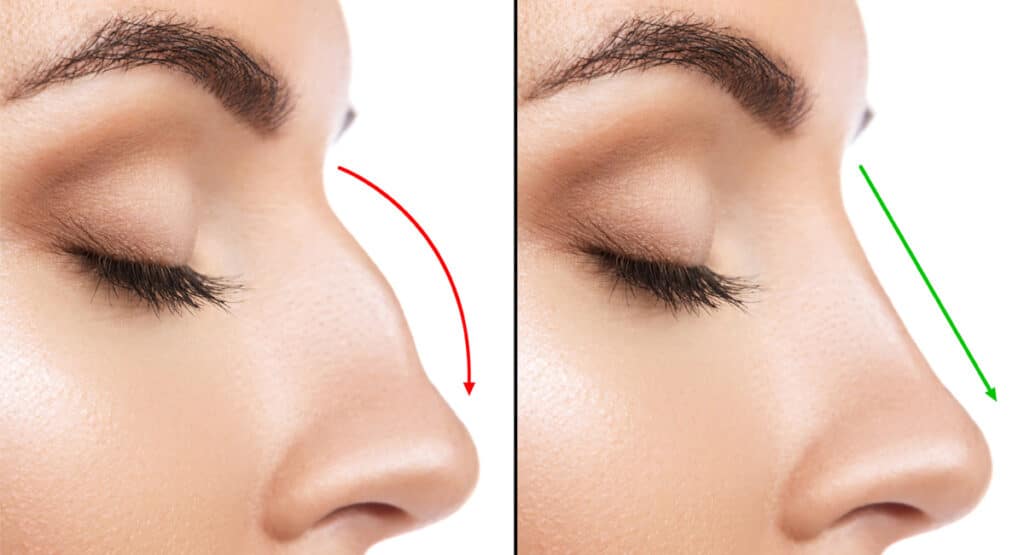
Adjustments in Nostrils during Rhinoplasty Surgery
During rhinoplasty surgery, nostril size and shape can undergo alterations for functional or aesthetic improvements. Achieved by adjusting the alar bases, these modifications improve nasal proportionality, ensuring a harmonious and balanced appearance.
Post-Procedure Expectations: Viewing Your New Profile
After rhinoplasty surgery, patients can anticipate a changed profile, that harmoniously accents their facial features. The adjustment may require some time to fully settle and reveal the outcome. Your rhinoplasty surgeon will guide you through profile view simulations, offering a closer look at expected results. Remember, achieving the ideal profile is a gradual process; inflammation and swelling may distort your immediate post-op appearance, but patience reveals the fully enhanced, rebalanced profile over time.
Ongoing Care and Maintenance Post-surgery
Adhering to post-procedure care advised by your rhinoplasty surgeon is paramount for achieving the best results after rhinoplasty surgery. This may include cleaning and hydrating the nasal area, as well as scheduling routine check-ups.
Rhinoplasty Surgery: More than Just a Nose Job
Enhancing noses through rhinoplasty surgery significantly boosts self-confidence by refining facial features and nostrils. More than a mere nose job, it contributes to an individual’s perception of beauty, culminating in an improved quality of life.
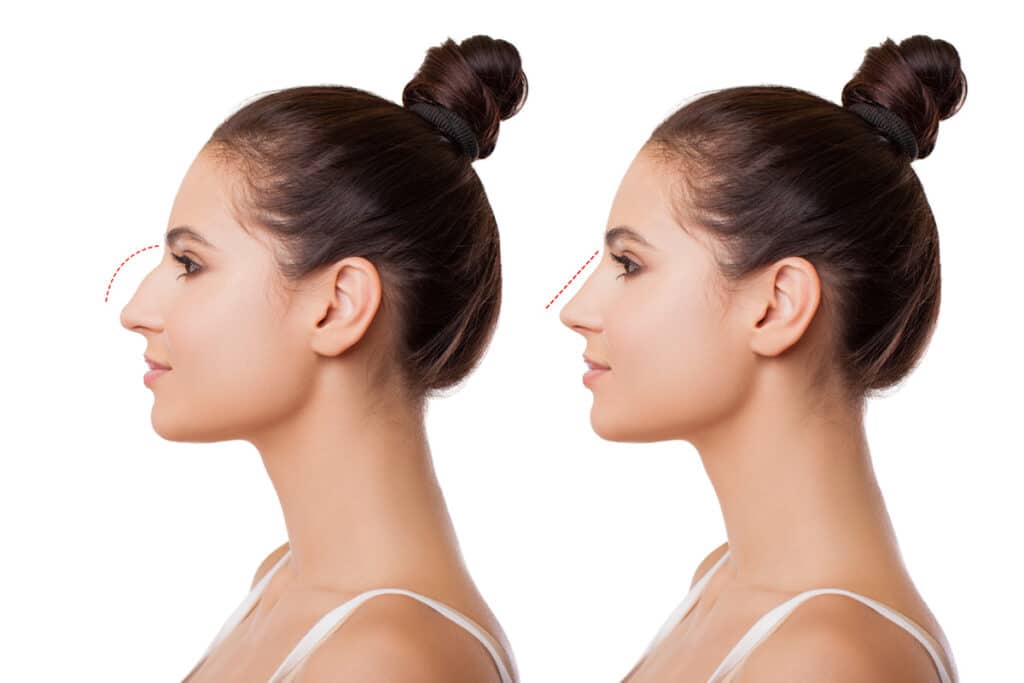
Rhinoplasty Surgery and its Effect on Overall Facial Proportions
Reshaping the nose through rhinoplasty surgery has profound effects on balancing overall facial features. The change can be life-altering and often results in a tremendous confidence boost.
Rhinoplasty surgery Miami significantly improves overall facial symmetry by altering the nose’s profile. It harmonizes facial features by adjusting the size or shape of the nose, contributing to a balanced appearance.
Choosing to undergo rhinoplasty surgery is a significant decision that requires professional advice. Dr. Anthony Bared, a renowned expert in the field, offers specialized consultations to discuss your options and potential outcomes honestly and empathetically. Trusting Dr. Bared with this pivotal decision can ensure you’re guided with unparalleled expertise and care throughout the process.
